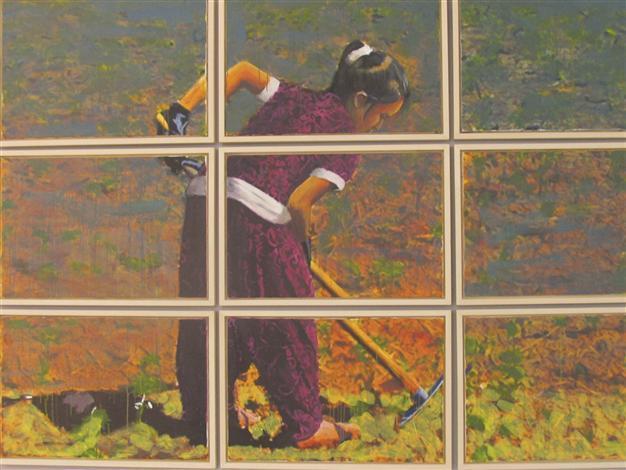'Space and Contact' revealed through art works
ISTANBUL - Hürriyet Daily News

Space and Contact’ can be thought of through concepts such as migration, creation, unnameable mass and alienation, according to curators.
The Baksı Museum in Turkey’s northeastern province of Bayburt has organized its events for 2012 under the theme of “Space and Contact.” The museum is once again gathering different art disciplines together to illustrate a single theme, and this year’s events are designed to break down barriers and bring art closer to its audience.The museum is located in a remote Black Sea village, and aims to bring together contemporary and traditional art to fulfill the needs of the Bayburt locals. The new events and concept opened to the public at the end of June, and include exhibitions and in-studio works. This year the Baksı Museum has organized the events into four main categories: art, design, fashion and gastronomy.
The exhibition is curated by Fırat Arapoğlu, Mürteza Fidan and Kurucu Koçanoğlu, and features the works of Ali İbrahim Öcal, Ragıp Basmazölmez, Murat Sezer, Çağrı Saray, Ahmet Albayrak, Baybora Temel, İbrahim Koç, Özge Usluca, Özlem Şimşek, Ahmet Doğu İpek, Tunca Subaşı, Gökçe Oflu, Başak Kademoğlu, Sevil Tunaboylu, Borga Kantürk, Sena Arcak, Elif Süsler and Şenay Kazalova.
“Space and Contact” can be thought of through concepts such as migration, creation, unnamable mass and alienation, according to a written statement from the curators. For example, Ali İbrahim Öcal’s two-channel video work “Our voice will go on to the journey” focuses on changing places, while Ragıp Basmazölmez’s works focus on the economic consequences of migration and how it effects both developed and developing countries. Immigration is the main focus of the works of Başak Kademoğlu and Sevil Tunaboylu. Kademoğlu’s installation focuses on the common journey to the West, while Tunaboylu analyzes migration with a wall installation titled “Escape from Civilization.” Meanwhile, Murat Sezer’s work shows a large amount of luggage, and perhaps refers to the unnamable mass of society. The theme of changing places may also be seen at the works of Çağrı Saray, who uses an architectural approach that focuses on the story of the clock tower in central Bayburt. Ahmet Albayrak shows the volume that is created between spaces.
Creation process of the artists
Baybora Temel, on the other hand, focuses on the creative process of the artist with his canvas work titled “Working Girl.” İbrahim Koç looks at the environmentalist approach with his sculpture of large mosquito, and the same approach can also seen in Özge Usluca’s work, which uses ecologic materials in constructive forms. Özlem Şimşek’s work analyzes the situation of women and their wishes in society. Such works thus focus on Bayburt’s local life and take on international issues and problems.
Ahmet Doğu İpek and Tunca Subaşı focus on unnamed masses, reflected in the sense of “nothingness” in their works. The works of Subaşı and İpek also focus on history. Gökçe Oflu, with her wall installations, focus on creation and the world. The alienation theme is revealed in the works of Borga Kantürk, Sena Arcak and Elif Süsler. While Borga Kantürk considers the serendipities and encounters of daily life, Süsler makes use of shadow theater. Sena Arcak, on the other hand, uses a postmodern approach. Kazalova’s canvases consider the alienation of society in an uncanny way. Summing it all up, Ahmet Aydın Atmaca focused on the creation process of the artists, taking hand prints of people at the exhibition venue and creating a project out of it.
















